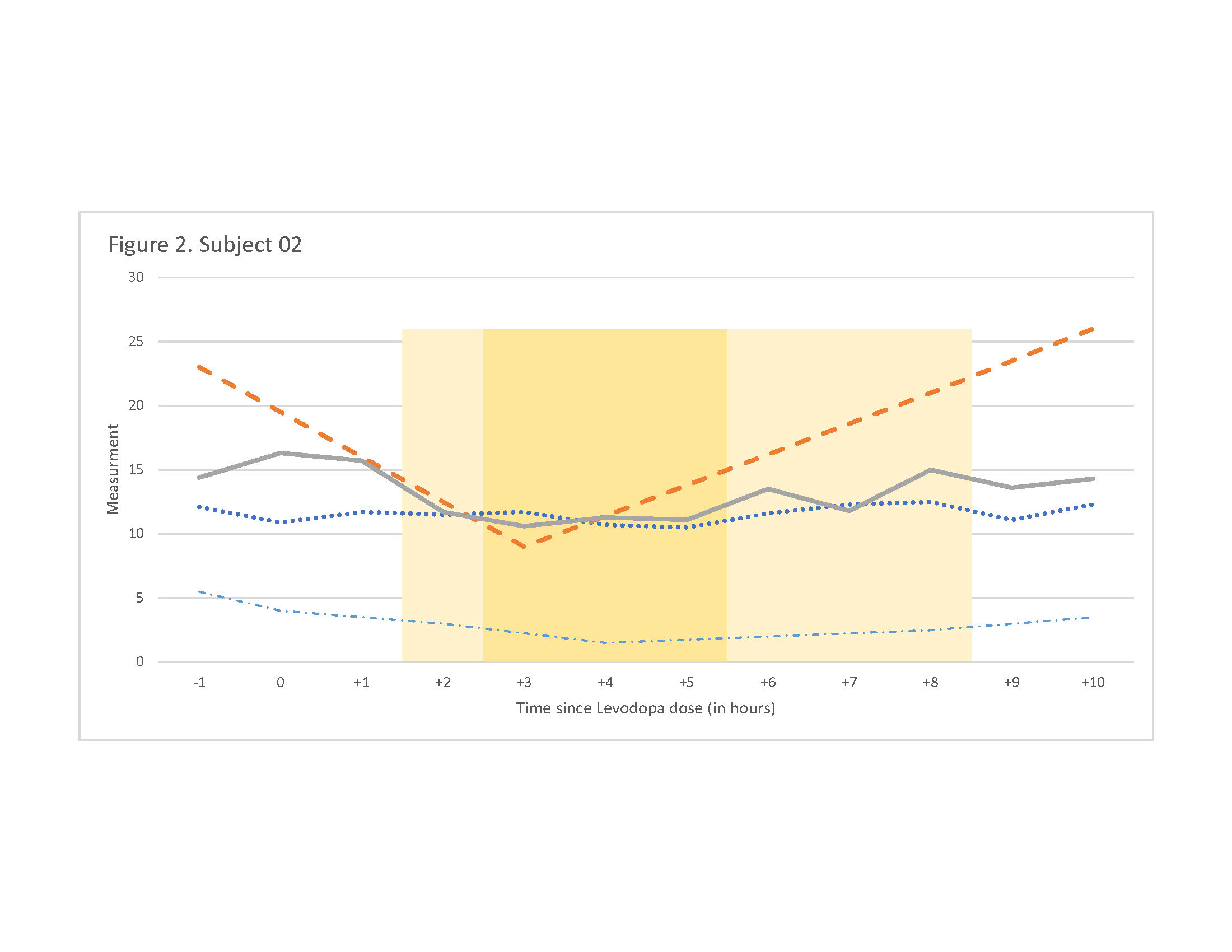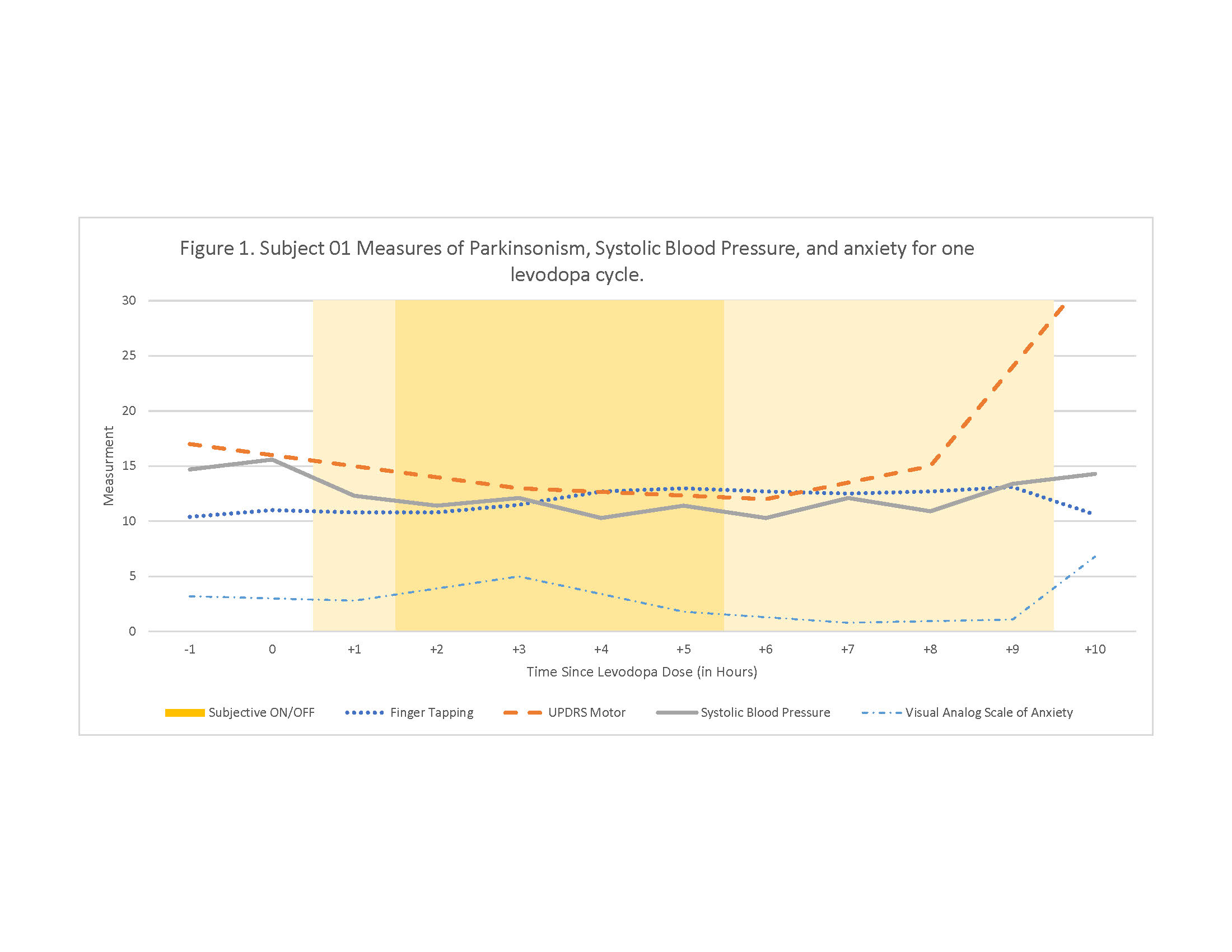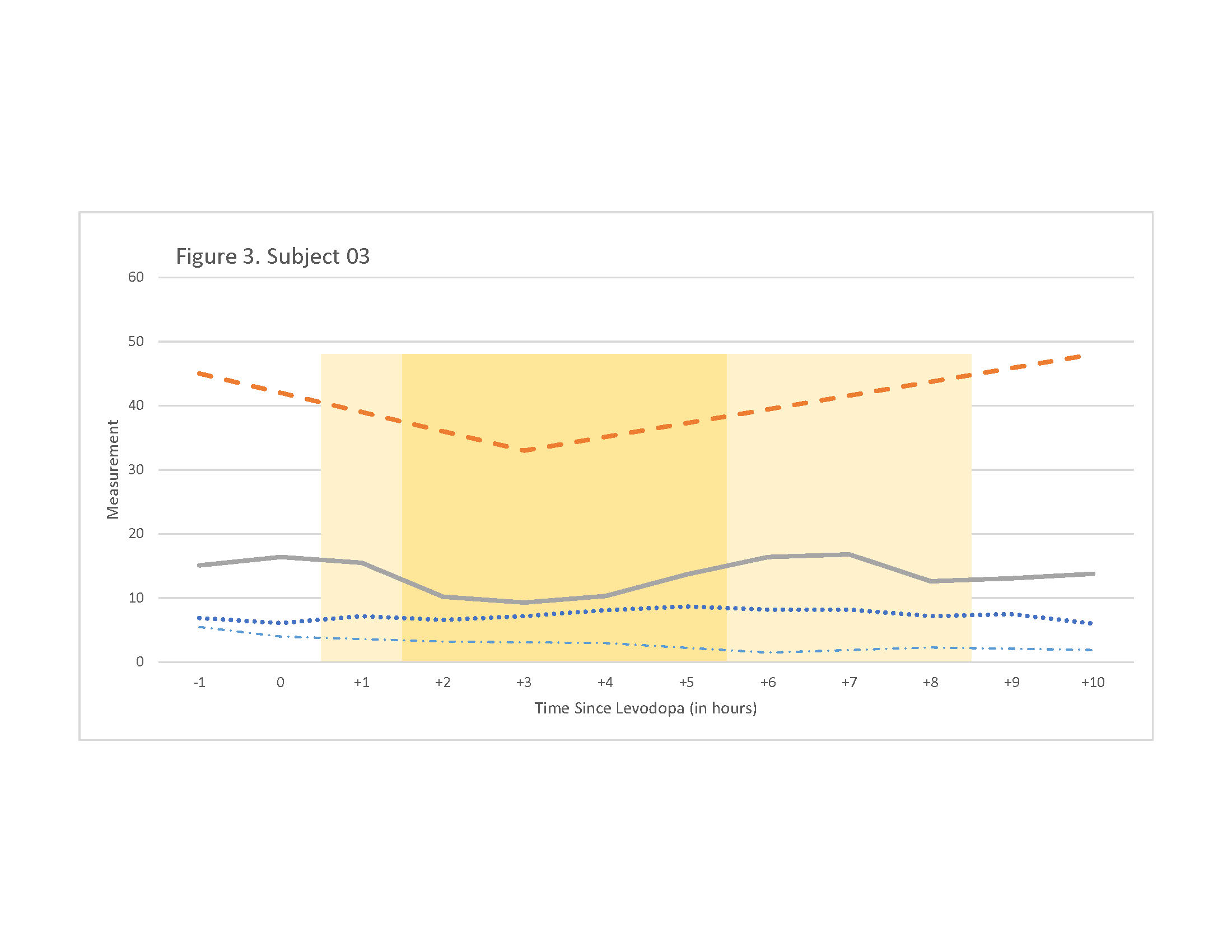Category: Parkinson's Disease: Non-Motor Symptoms
Objective: To examine ON and OFF blood pressure (BP) fluctuations in Parkinson’s Disease (PD) patients.
Background: The current practice often is to treat transient hypertensive spikes reported by patients or measured in clinics with anti-hypertensive medications. This may contribute to morbidity by worsening orthostatic hypotension and increasing fall risk. There are two studies that have demonstrated that BP fluctuation can occur in motor fluctuators (MF) during the OFF state [1][2]. Baratti et al measured blood pressure in 13 PD patients, 7 with MF and 6 without MF. In the MF, the mean systolic/diastolic BP were significantly higher than the non-MF during the OFF state but not the ON state.
Method: We report on BP measurements from two studies. The first study was a prospective longitudinal intervention (high dose docosahexaenoic acid (2,000 IU/day) versus placebo) of levodopa-naïve PD. Visits occurred at 0 days, 6 weeks, 6 months, 1 year, and 1.5 years and involved a two-hour intravenous administration of levodopa (0900-1100). Sitting BP was taken by skilled nurses every ½ hour from 0800 until the participant returned to the OFF state as determined by the primary investigator. The second study is an observational trial examining BP fluctuation in persons with PD and at least a 30% change in systolic blood pressure from the OFF to the ON state. The second study measured sitting BP every ½ hour from 0800 until the OFF state as determined by the primary investigator. Oral levodopa equivalent to clinical dose was taken at 0900.
Results: Study 1: Baseline, peak, and change values for systolic blood pressure (SBP) were examined for the visit at 0 days of levodopa exposure versus 1 year for 26 people. In looking at MF versus non-MF as defined by a ≥ 10 % increase in tapping score at year 1, there was no difference between OFF SBP (t(25) = -0.27, p = 0.79), ON SBP (t(26) = 0.08, p = 0.94), or change from OFF to ON SBP (t(26) = 0.35, p = 0.73).
Study 2: Four PD subjects completed the study. Visual inspection of the ON/OFF cycle shows SBP displaying the inverse pattern to tapping scores indicating SBP may be tied into the levodopa cycle [figure 1-3].
Conclusion: If severe hypertension occurs during motor OFFs in PD patients, the approach to treating hypertension in this population would change to no longer prescribe anti-hypertensive medications. Instead, treatment would entail modification of the patient’s anti-parkinsonian regimen to minimize OFF time.
References: [1] Baratti, M., & Calzetti, S. (1984). Fluctuation of arterial blood pressure during end-of-dose akinesia in Parkinson’s disease. Journal of Neurology, Neurosurgery, and Psychiatry, 47: 1241-1243. [2] Pursiainen et al. Blood pressure and heart rate in parkinsonian patients with and without wearing-off. Eur J Neurol. 2007 Apr;14(4):373-8.
To cite this abstract in AMA style:
K. Chung, B. Lobb. ON/OFF Blood Pressure Fluctuation in Parkinson’s Disease [abstract]. Mov Disord. 2021; 36 (suppl 1). https://www.mdsabstracts.org/abstract/on-off-blood-pressure-fluctuation-in-parkinsons-disease/. Accessed December 22, 2025.« Back to MDS Virtual Congress 2021
MDS Abstracts - https://www.mdsabstracts.org/abstract/on-off-blood-pressure-fluctuation-in-parkinsons-disease/



